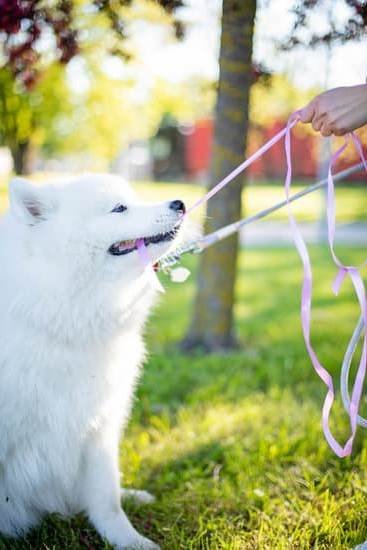How Long Should It Take To Crate Train A Dog
?
The time it takes to crate train a dog varies depending on the dog’s age, temperament, and past experiences. Generally, the younger the dog, the quicker the training will be. It is important to be patient and consistent with the dog, and to never use the crate as a punishment.
The crate should be large enough for the dog to stand up, turn around, and lie down in comfortably. The dog’s bedding should be soft and comfortable. Initially, the dog should be introduced to the crate slowly, with plenty of positive reinforcement.
The basic steps for crate training are as follows:
1. Place the crate in a quiet, comfortable spot in the home.
2. Put a soft bedding inside the crate.
3. Feed the dog in the crate.
4. Close the door to the crate, but do not lock it, and leave the dog for short periods of time.
5. Gradually increase the amount of time the dog spends in the crate.
6. Once the dog is comfortable in the crate, begin to lock the door for short periods of time.
7. Gradually increase the amount of time the dog spends in the crate with the door locked.
Crate Training Big Dogs
There’s no need to be afraid of crate training big dogs – in fact, it can be a very successful way to housebreak them. The key is to start slowly and gradually increase the amount of time your dog spends in the crate.
Big dogs can be quite a challenge when it comes to housetraining. Crate training can be a very successful way to housebreak them, but it’s important to start slowly and gradually increase the amount of time your dog spends in the crate.
Here are a few tips for crate training big dogs:
1. Make sure your dog is comfortable in the crate.
Some big dogs may be hesitant to enter a crate, so it’s important to make sure it’s comfortable for them. You can do this by putting a soft blanket or towel in the crate and by giving your dog a toy or bone to chew on.
2. Start slowly.
Don’t expect your dog to spend hours in the crate right away. Start by putting them in the crate for a few minutes at a time and gradually increase the amount of time they spend in there.
3. Reward your dog for entering the crate.
If your dog is hesitant to enter the crate, you can entice them with a treat or toy. Once they’re inside, praise them and give them their treat or toy.
4. Don’t use the crate as a punishment.
The crate should be a place your dog enjoys spending time in, not a place they’re afraid of. If your dog is hesitant to enter the crate, it may be because they’ve been punished in the past. Be sure not to use the crate as a punishment – this will only make your dog reluctant to enter it.
5. Be patient.
It may take a while for your dog to get comfortable with the crate. Be patient and keep rewarding them for entering the crate. With a little bit of patience, you can successfully crate train your big dog.
How To Crate Train Your Older Dog
When crate training an older dog, it’s important to take things slowly and not to rush the process. Depending on the age and temperament of your dog, it may take a little longer for them to get used to the crate.
The first step is to get your dog comfortable with being near the crate. Leave the crate open and put some of their favourite toys inside. Encourage them to go in and play with the toys. Once they’re comfortable with being in the crate, start feeding them their meals inside the crate. Gradually increase the amount of time they spend in the crate, until they’re comfortable staying in there for long periods of time.
Once your dog is comfortable in the crate, start closing the door for short periods of time. gradually increase the amount of time they spend in the crate with the door closed. If your dog starts to whine or bark, wait until they stop before opening the door. This may take a little bit of patience, but it’s important to be consistent with the crate training.
The crate can be a great place for your dog to sleep, especially if you’re not able to keep an eye on them all the time. Make sure the crate is big enough for your dog to stand up, turn around and lie down in. If your dog seems to be uncomfortable in the crate, you may need to get a bigger one.
Crate training can be a great way to help your older dog feel safe and secure, and it can also help to prevent them from getting into mischief when you’re not around.
Is It Too Late To Crate Train A Dog
?
One of the most common questions we get asked at the Academy is whether or not it’s too late to crate train a dog. The answer, of course, is never too late! Crate training can be an incredibly effective way to housebreak a dog, and it can also be a valuable training tool for puppies and adult dogs alike.
The key to successful crate training is to make sure that your dog sees the crate as a positive place. You can do this by providing plenty of positive reinforcement when your dog uses the crate, and by making sure that the crate is always associated with good things, such as treats, playtime, and nap time.
If your dog is resistant to the idea of spending time in the crate, start out by making the crate a very positive place. Put some of your dog’s favorite toys and treats inside, and make sure to give your dog lots of praise when he or she goes into the crate. With time and patience, your dog will come to see the crate as a happy place.
How To Train Dog To Not Bark In Crate
There are a few things you can do to train your dog not to bark in their crate. One of the most important things is to make sure that your dog is getting enough exercise. If your dog is getting enough exercise, they will be less likely to bark in their crate. You can also try teaching your dog a cue to stop barking. If your dog barks once, say “quiet” in a firm voice. If your dog barks again, give them a firm correction by shaking a can of pennies or using a squirt bottle. If your dog is still barking, put them in their crate for a few minutes.

Welcome to the blog! I am a professional dog trainer and have been working with dogs for many years. In this blog, I will be discussing various topics related to dog training, including tips, tricks, and advice. I hope you find this information helpful and informative. Thanks for reading!





